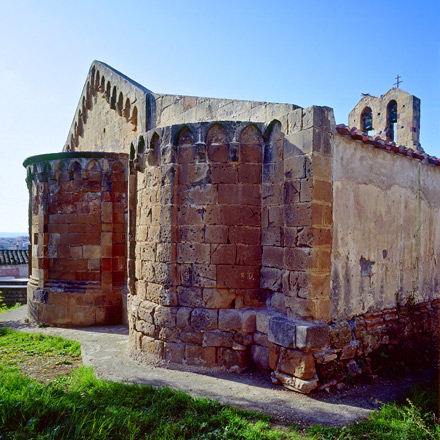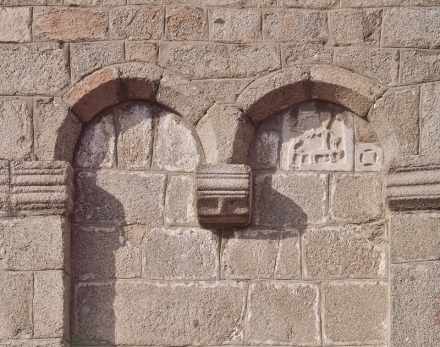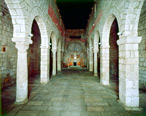The Church
The region of Oschiri presents small-sized churches, whose formal features and building techniques make them remarkable all the same. The most sophisticated church is the Nostra Signora di Castro, dominating the plain of river Coghinas. Consecrated in the second half of the 12th century, it once carried out cathedral functions. It presents a single nave, a north-east apse and a porch of a later age on the northern side. Once again, a Romanesque church is inserted in a wonderful landscape setting, where the monument appears in perfect harmony with nature.
Description »
Consecrated in the second half of the 12th century, the church once carried out cathedral functions. It presents a single nave, a north-east apse and a porch of a later age on the northern side. The volcanic stone used as building material, cut and placed with special accuracy, creates very evocative effects resulting from its different hues.
The façade is marked by pilasters describing arcadings following the varying roof levels. The median inter-pilaster hosts the entrance portal, sided by two semi-columns and surmounted by a cruciform opening. An analogous cruciform opening is found on the back side of the church. Either the apse and the sides are marked by vertical partitions, ending in Lombard bands resting upon corbels.
History »
A diocese see, it has handed down the figure of a bishop of Castra in the act of consecrating the Santissima Trinità di Saccargia, datable from 1116. Another source mentions the bishop Attone, consecrating the church of San Demetrio di Oschiri and of Santa Maria di Anela, between 1162 and 1168, respectively.
Bibliography »
Roberto Coroneo, Architettura romanica dalla metà del mille al primo ‘300, Nuoro, 1993. Roberto Coroneo, Renata Serra, Sardegna preromanica e romanica, collana “Patrimonio artistico italiano”, Milano, 2004.Roberto Coroneo, Chiese romaniche della Sardegna. Itinerari turistico-culturali, Cagliari, 2005.
Location






















 Apse
Apse
 Hanging arch
Hanging arch
 Cathedral
Cathedral
 Diocese
Diocese Pilaster
Pilaster
 Portal
Portal





